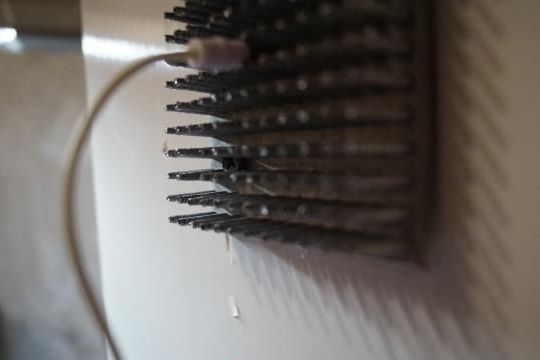
This article talks about creating a dehumidifier from scratch at minimal cost. Although, almost every air conditioner has a similar function, but not everywhere its installation will be worth it, as it may be too expensive or not require such power. In addition, the dehumidifier that the author was going to collect should have one rather convenient quality - noiselessness.
Materials and tools that the author used to create a home-made dehumidifier:
1) Two radiators
2) Peltier element
3) fan
4) thermally conductive paste
5) wood screws
6) drill and screwdriver
Consider the basic principle of operation of this device and the stages of its assembly.
The basis of the circuit of this device will be the Peltier element. The Peltier element is a device that, when an electric current is applied to it, begins to cool the surrounding air from one of its sides, and, on the other, emits heat. In order to deal with the heat generated by this element, the author decided to use a radiator with a fan as a cooling system.
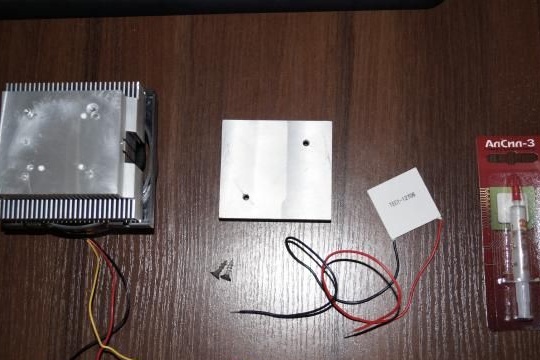
Having prepared all the necessary elements for assembly, the author proceeded to create a device for drying air.
First, two radiators were taken and mounted on a table, after which the author drilled several holes in each of them. Then the author took the Peltier element and namaz it on each side with thermally conductive paste. There should not be too much paste, the author notes, it only has to remove the irregularities between the element and the surface of the radiators, but it is also not worth pity on it. After this procedure, the author put the Peltier element between two radiators, pressed them and in this state fastened them using self-tapping screws. All three parts should fit as tightly as possible to each other, however, excessive fanaticism should be avoided so as not to break the Peltier element, which can crack under loads.
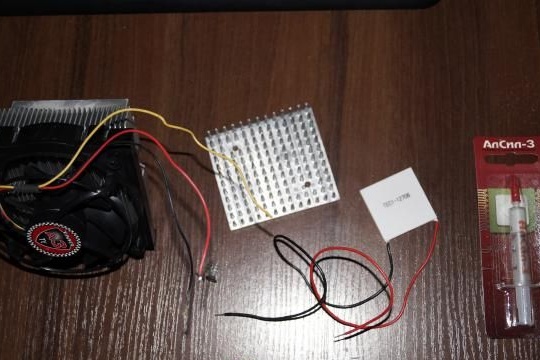
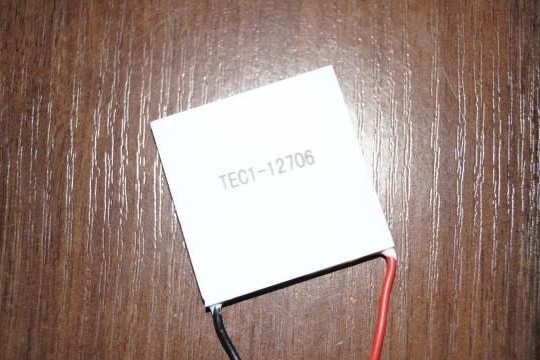
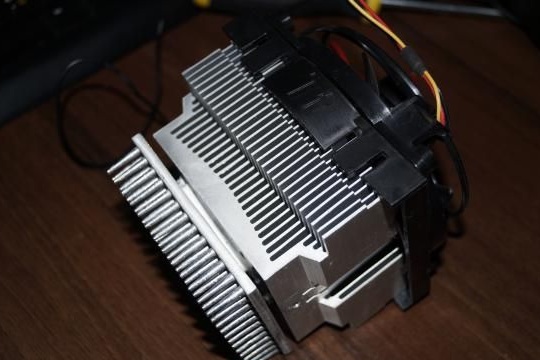
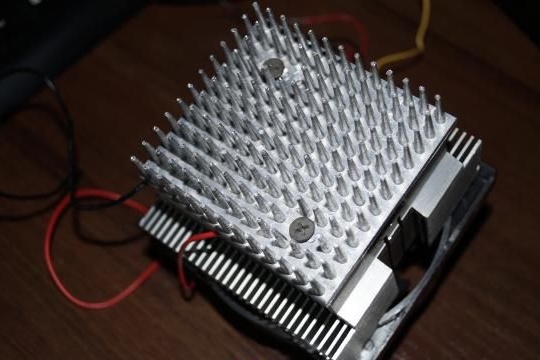
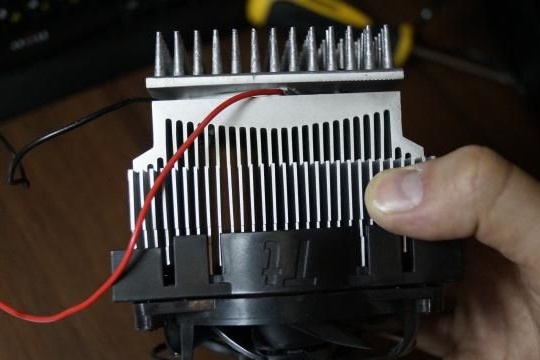
In fact, the entire main part of the device for air dehumidification in the apartment is ready, it remains only to fix it, connect the power and adjust the blowing fan, which the author started.
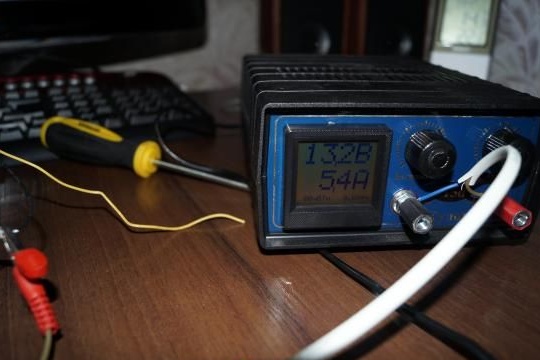
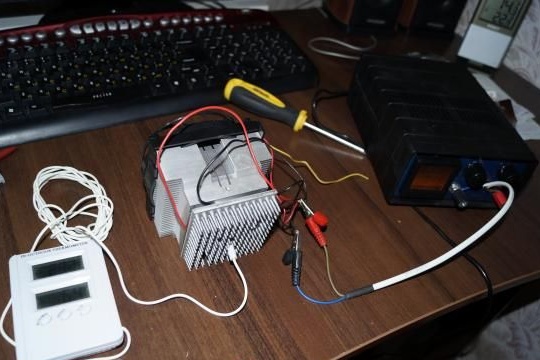
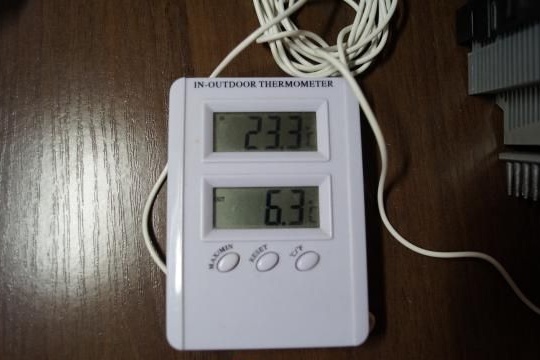
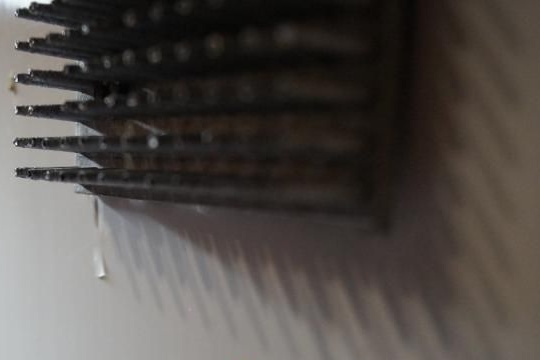

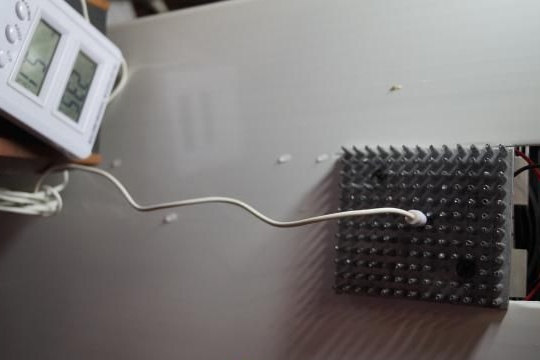
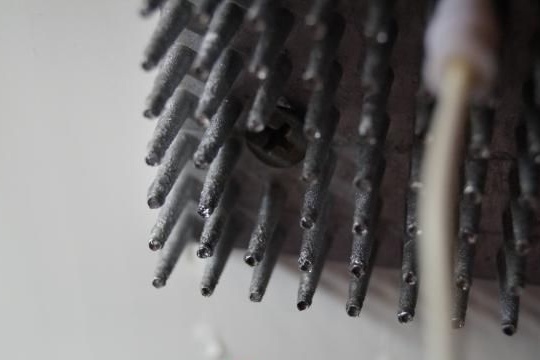
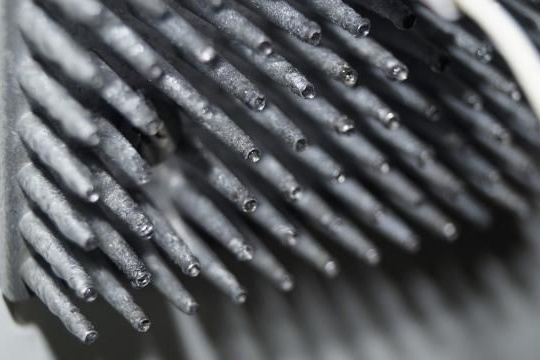
After the desiccant has been fixed, a vessel must be placed under it to collect the liquid, since when the air cools, the moisture contained in it will condense on the cooling side of the Peltier element and drain down. The author decided to connect the cooler in parallel with the element in such a way that 12-15 V power was supplied. It is worth noting that if a smaller radiator starts to heat up, then it will be necessary to change the power polarity of the element.
Further, the author proceeded to test this device in a residential environment. For greater clarity, the dehumidifier was connected to a thermometer, which shows that when the power was turned on, the temperature on the cooling side of the element dropped to 6 degrees. After some time, the radiator began to fog up and water drained into the substituted container. According to the author, after about 20 minutes of operation of the device, the temperature on its side dropped to 4 degrees. According to the author, in 12 hours the device condensed up to two liters of liquid. In addition, this device can be installed in any housing and used as a refrigerator.
However, the author did not test such use of the device, since he still needed the dehumidifier more to reduce the humidity in the apartment, which he successfully achieved in the end.
